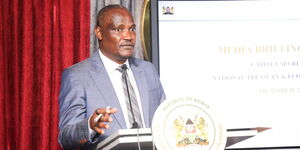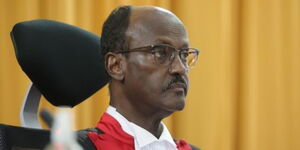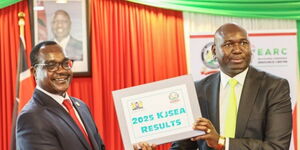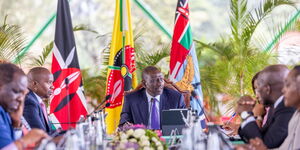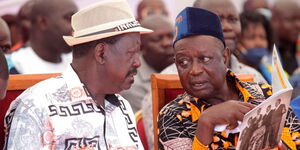In exactly 266 days, Kenyans will go to the ballot to elect a replacement of President Uhuru Kenyatta. And with his tenure slowly coming to an end, Kenyatta's legacy, including hits and misses of his administration remains a matter of public debate.
President Kenyatta's flagship projects under the Big Four Agenda are the highlight of his leadership - projects that have gobbled billions of shillings.
According to the recently released budget policy statement for the next financial year 2022/23, the big four agenda remains an integral part of his legacy with Universal Health Coverage being at the center of his achievement.
In the draft policy statement, the Uhuru-led administration intends to build 50 new level 3 hospitals across the country as part of the UHC program.
An undertaking that will see tax payers fork out a total of Ksh3.2 billion out of a budget that is over Ksh3.3 trillion.
“ To enhance access to medical coverage across the nation, and as part of the Universal Health Coverage programme, the Government will establish an additional 50 New Level 3 Hospitals, to be situated in non-covered areas 23 Draft 2022 Budget Policy Statement and densely populated areas across our nation. To enable this, the Government will allocate Ksh 3.2 billion for immediate construction of these medical facilities,” draft policy statement reads in part.
The level 3 hospitals are expected to cost at least Ksh64 million with details remaining scanty on the capacity of the facilities.
This undertaking coming even as the government continues to struggle to raise enough revenue, resulting to debt financing of major capital intensive projects.
A case that will be no different for the 2022/23 as the government intends to continue borrowing to sustain its expenditure, “Government borrowing needs will be met through external and domestic funding sources. External sources will be mainly from multilateral, bilateral and commercial lenders while for the domestic, resources will be from Treasury bonds and bills issuances.”
In the 2020/21 financial year, the health ministry received the fourth biggest allocation of Ksh111.7 billion, with 50 billion.
The allocation however is preceded by the ongoing investigation into cases of misappropriation of funds at the health ministry. As a result, the National Youth Service (NYS) stepped in to help manage operations at the troubled Kenya Medical Supplies Authority (Kemsa) on a temporary basis.
Leaving now more than 900 staff uncertain of their future after parliament backed the decision to send home all non-core workers to pave the way for reforms.
Other sectors that received huge allocation in the Kenyatta’s administration, include education sector where 8 billion was allocated to the Competency Based Curriculum (CBC) among other economic recovery strategies.

